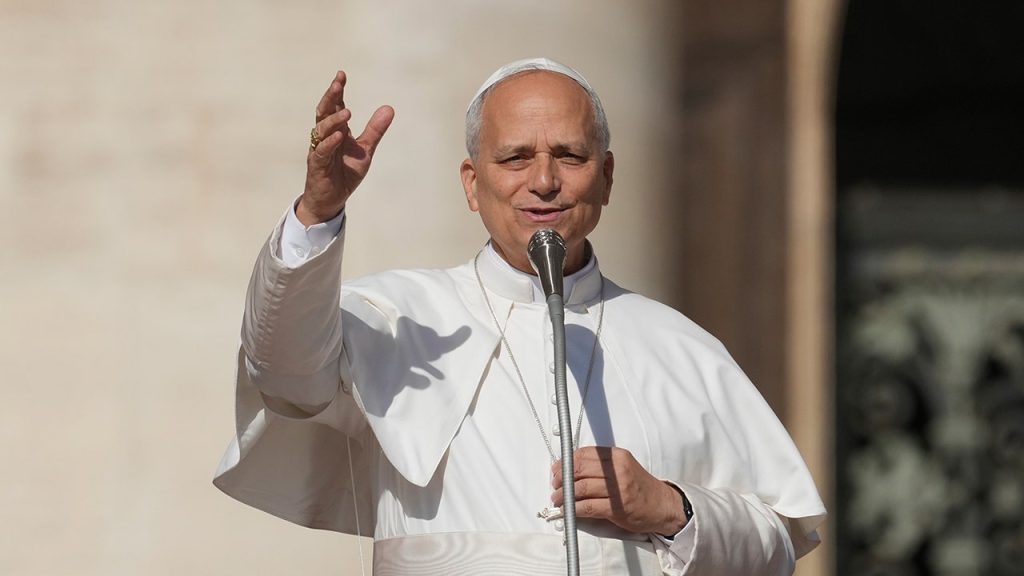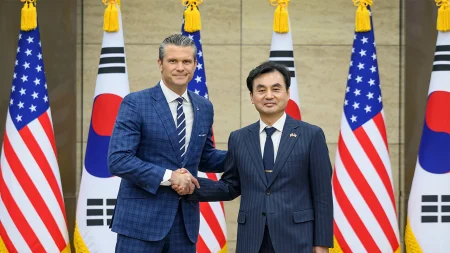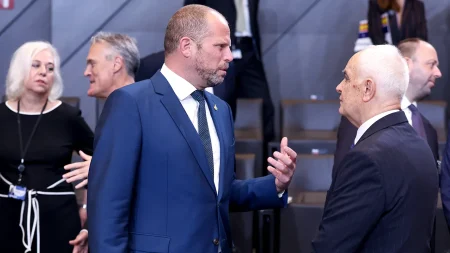A Modern Miracle: Pope Leo XIV Canonizes First Millennial Saint
In a historic ceremony that bridged ancient tradition with contemporary faith, Pope Leo XIV recently canonized two remarkable young Italians, including the Catholic Church’s first millennial saint. Before a crowd of 80,000 gathered in St. Peter’s Square, 15-year-old Carlo Acutis and Pier Giorgio Frassati were elevated to sainthood—two lives cut tragically short but whose spiritual impact continues to resonate across generations. During his homily, Pope Leo emphasized that both saints had created “masterpieces” of their lives through dedication to God, reminding the faithful that “the greatest risk in life is to waste it outside of God’s plan.” This powerful message resonated throughout the square as the Pope called on all people, particularly youth, “not to squander our lives, but to direct them upwards and make them masterpieces.” The canonization represents a significant moment for the modern Church, highlighting figures who embodied spiritual devotion while engaging with the realities of contemporary life.
Carlo Acutis, born in 1991 and known affectionately as “God’s Influencer,” represents a thoroughly modern saint whose faith harmonized with technological innovation. At a time when website development was largely the domain of professionals, young Carlo created a sophisticated multilingual website documenting Eucharistic miracles recognized by the Church. His technological aptitude, combined with deep spiritual devotion, offered a compelling example of how faith and modern life can intertwine meaningfully. Tragically, in October 2006, Carlo was diagnosed with acute leukemia and died within days, at just 15 years old. His body now rests in Assisi, a town forever associated with another beloved saint, Francis. Carlo’s canonization was initially championed by Pope Francis, who recognized in the young computer genius a figure who could connect with today’s digital-native Catholics while addressing both the promises and perils of our technological age. Pope Leo XIV has continued this focus, frequently highlighting technology—particularly artificial intelligence—as one of humanity’s greatest contemporary challenges.
Alongside Carlo, the canonization elevated Pier Giorgio Frassati, whom Pope Leo described as a “beacon for lay spirituality.” Born to a prominent family in Turin, Italy, Frassati could have pursued a life of privilege and comfort. Instead, he devoted himself to “constant, humble, mostly hidden service to the poorest of Turin,” according to the Frassati Catholic Academy. His simple lifestyle stood in stark contrast to his family’s wealth—he consistently gave away food, money, and whatever else was asked of him by those in need. His ministry frequently took him into Turin’s impoverished neighborhoods, where it’s believed he contracted the polio that would claim his life in 1925 when he was just 24 years old. What makes Frassati’s story particularly compelling is how he integrated his faith with his passions for mountaineering, activism, and intellectual pursuits, demonstrating that holiness need not be confined to monasteries or convents but can flourish in active engagement with the world.
The dual canonization bridges different eras while highlighting similar virtues—both saints died young but lived with extraordinary purpose. Carlo, a child of the digital age, and Frassati, who lived a century earlier, each demonstrated how faith could be expressed through practical service and dedication to others rather than mere theological abstraction. Their elevation to sainthood signals the Church’s evolving understanding of holiness in the modern world. For Carlo, this meant using digital tools to spread the faith; for Frassati, it meant working for social justice and serving the marginalized despite his privileged background. Both young men rejected the self-centered pursuits often associated with youth, choosing instead paths of service and devotion that have now been recognized at the highest level of Catholic veneration.
The canonization ceremony itself was a grand affair, blending the Church’s ancient traditions with recognition of contemporary challenges. The presence of 80,000 faithful in St. Peter’s Square underscored the continued relevance of sainthood in modern Catholic practice. Many attendees were young people drawn by Carlo’s relatability—a teenager who enjoyed video games and computers while maintaining profound faith—or inspired by Frassati’s integration of adventure, activism, and spirituality. Pope Leo’s decision to highlight these particular saints speaks to his vision for the Church’s future: one that embraces technological innovation while remaining grounded in timeless values of service and compassion. It acknowledges that today’s faithful need contemporary models who navigated the same cultural landscapes and moral challenges they face.
As the Catholic Church moves deeper into the 21st century, these canonizations represent more than just the recognition of two holy individuals—they signal an institutional adaptation to changing times while maintaining spiritual continuity. Carlo Acutis offers a compelling response to questions about faith’s relevance in a digital world, while Frassati demonstrates how privilege can be channeled toward social justice rather than self-indulgence. Together, they present complementary visions of modern holiness that transcend the often artificial divides between tradition and progress, contemplation and action, individual piety and social engagement. Their stories remind us that lives of extraordinary meaning need not be long to be complete, and that the measure of a life well-lived lies not in its duration but in its dedication. As Pope Leo XIV concluded in his homily, these new saints invite all people, “especially young people,” to recognize that lives directed toward higher purposes become masterpieces—regardless of whether they span decades or, as with these two remarkable young men, are compressed into brief but brilliant passages through this world.















